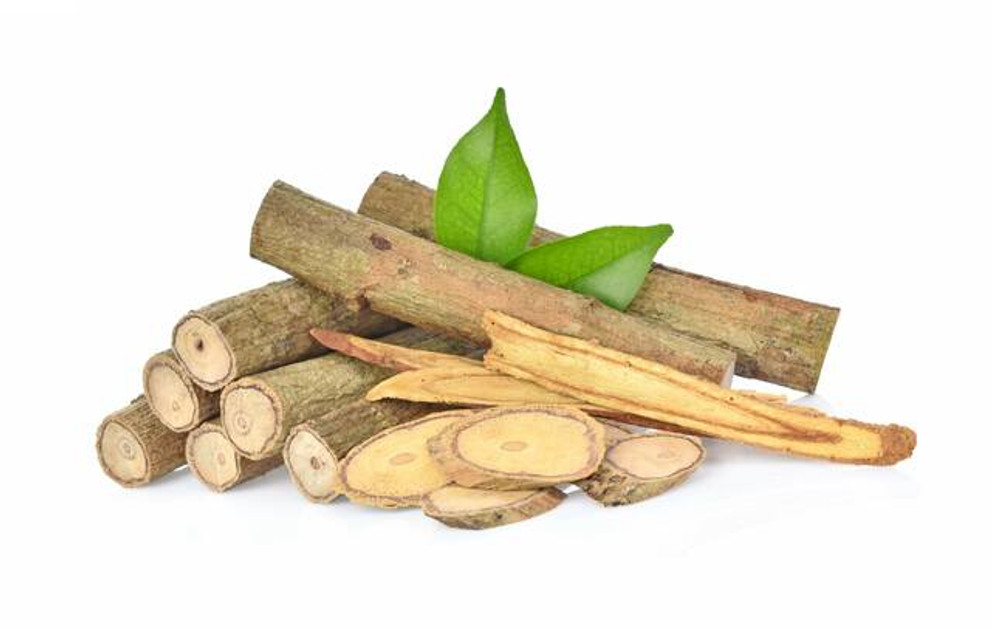What is Licorice Root?
Posted by DrNatura on Apr 5th 2022
Licorice Root (Glycyrrhiza glabra). Native to southeast Europe and southwest Asia, licorice grows wild throughout many European nations and the Middle East. 1 Only its roots – fresh or dried – are used medicinally. It is most often used to treat mucous membrane inflammation and to soothe coughs. 2
What it is used for: Licorice has anti-inflammatory, antiulcer, expectorant, antiplatelet, antifungal, and antibacterial properties. 3 Licorice has a long history of successful use in the treatment of gastric ulcers. 4 It may also be effective for a variety of infectious diseases. Modern uses of licorice include using it as a component in cold and flu remedies, for bronchitis, and in the treatment of hormonal issues, such as menopause and PMS. 5
Research Highlights: The two main constituents of licorice are glycyrrhizin and flavanoids. A preliminary trial found that chewable licorice tablets containing glycyrrhizin were just as effective at healing and maintaining stomach ulcers as a leading acid-blocking drug. 6 Research also indicates that deglycyrrhizinated licorice may stimulate natural defense mechanisms that prevent the occurrence of ulcers by increasing the number of mucous-secreting cells in the digestive tract, thereby improving the quality of mucous, lengthening the intestinal cell life, and enhancing microcirculation in the gastrointestinal lining. 7
----
Disclaimer: This information is meant to be used for educational purposes. These statements have not been evaluated by the Food & Drug Administration. These ingredients and DrNatura is not intended to diagnose, treat, cure or prevent any diseases.
As with any medical information on health, it is always best to check with your personal physician who knows your medical history best since they are more qualified in giving you the best recommendation. Our information, advice or recommendation is not intended to be a substitute for professional medical advice, diagnosis, or treatment. Always seek the advice of your physician or other qualified health provider with any questions you may have.
References:
1. The Complete Guide to Natural Healing. (2000). International Masters Publishers, AB., 1:140.
2. Ibid.
3. PDR For Herbal Medicines, 3rd ed. (2004). Thompson PDR, pg. 511.
4. Ibid.
5. Ibid.
6. https://innvista.com/health/herbs/licorice/
7. Balch, P. & Balch, J. (2000). Prescription for Nutritional Healing , 3rd ed., Avery Publishing, pg. 102.


